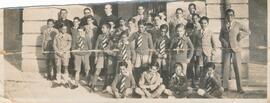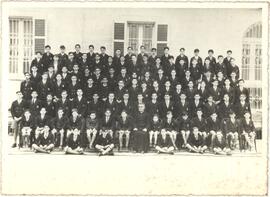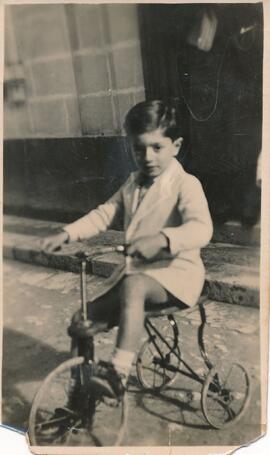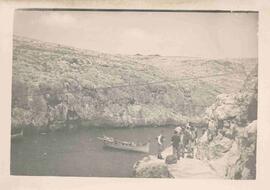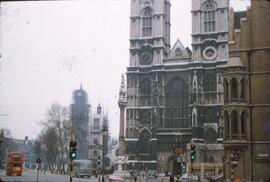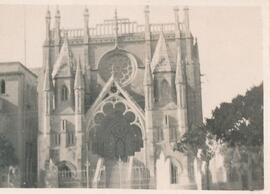Carmen Pizzuto, Mark Mifsud Bonnici and Loulou Mifsud Bonnici (Carmen's elder sister and Mark's mother). In the background the hillock known as 'Qolla l-Bajda' is visible.
In his written account, Frank Attard remarked that his gradual progress from Clerk-Typist to Permanent Secretary was valuable as he learned how to better administer and take decisions. Furthermore, consultation and staff involvement showed him that it increases the likeliness for strategies to succeed as one is able to gather more ideas and correct any potential mistakes. Frank also believed in the importance of staff support in certain domains, including social work, in order to lessen the work burden.
Giacomo Matina spoke about his life in Lampedusa, where he was born and when he took up the fisherman's trade. His life constituted of migration since he emigrated to Malta when he got married to a Maltese woman, Carmela, and then he emigrated again to Australia to provide a better life for his children. His contribution to this theme has been very important since he spoke of fishermen from Marsaxlokk and about the 'Rocky' family who were his adoptive family in Malta.
A group of women and children by the water's edge. One of the children is suspected to be Arthur Wait.
Theresa Muscat-Fenech's father, Mr William Oscar Martin, was Office Manager in the Milk Marketing Department. He was then appointed Commissioner for Gozo with his starting date being 6 March 1941.
William Gatt was Alfred Joseph Gatt's brother and Henry Louis Gatt's uncle
The former Wesleyan (Methodist) Church had been turned over to the State in the 1970s. It was inaugurated as a cultural centre and renamed Robert Samut Hall.
Antoine Pace Bonello (the best man at Henry's wedding), Maria Therese Gatt née Frendo Randon and Henry Louis Gatt at the wedding reception.
Maria Therese Gatt née Frendo Randon and Henry Louis Gatt at their going away after their wedding reception.
Vincent 'Censinu' Caruana was conscripted into the Royal Malta Artillery (R.M.A.) in August 1941 and demobilised in May 1945.
The building covered by ivy on the right used to be Christopher Columbus's house.
